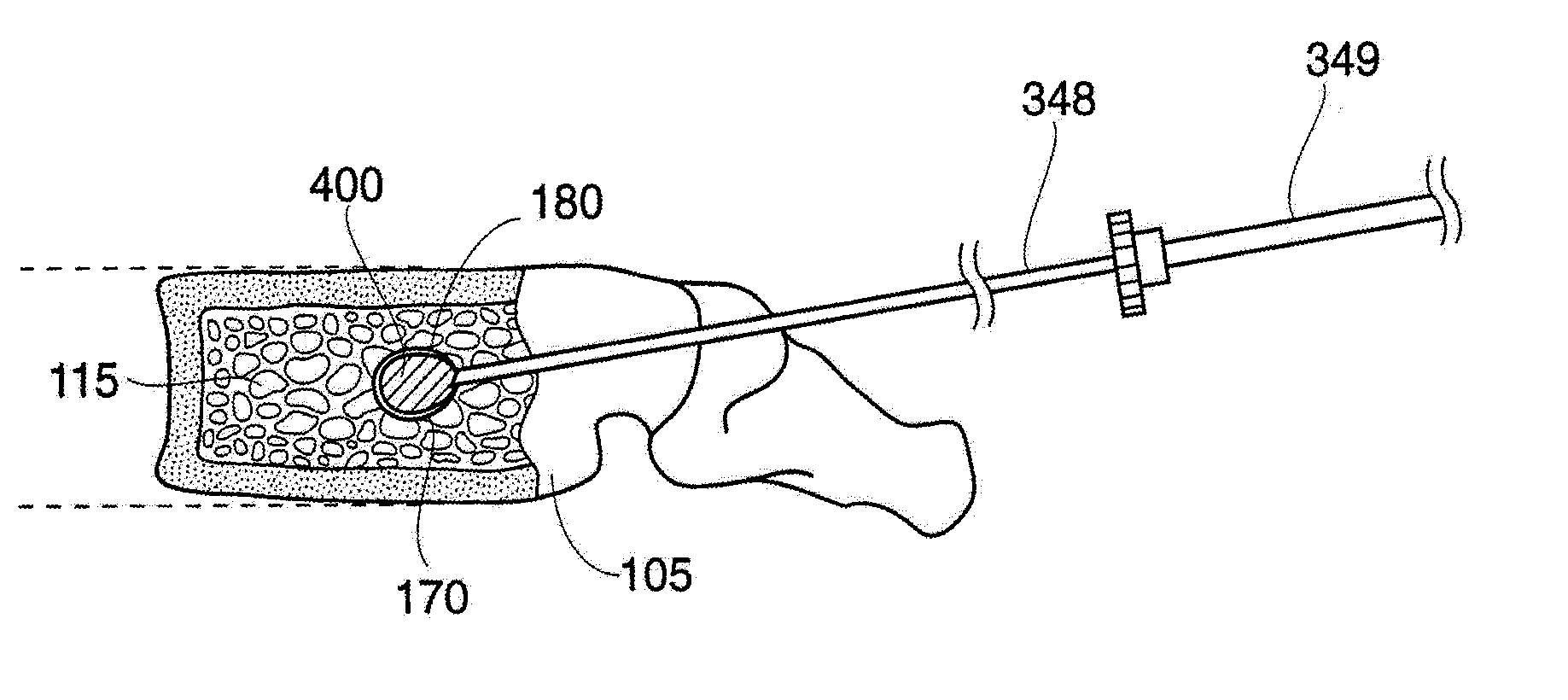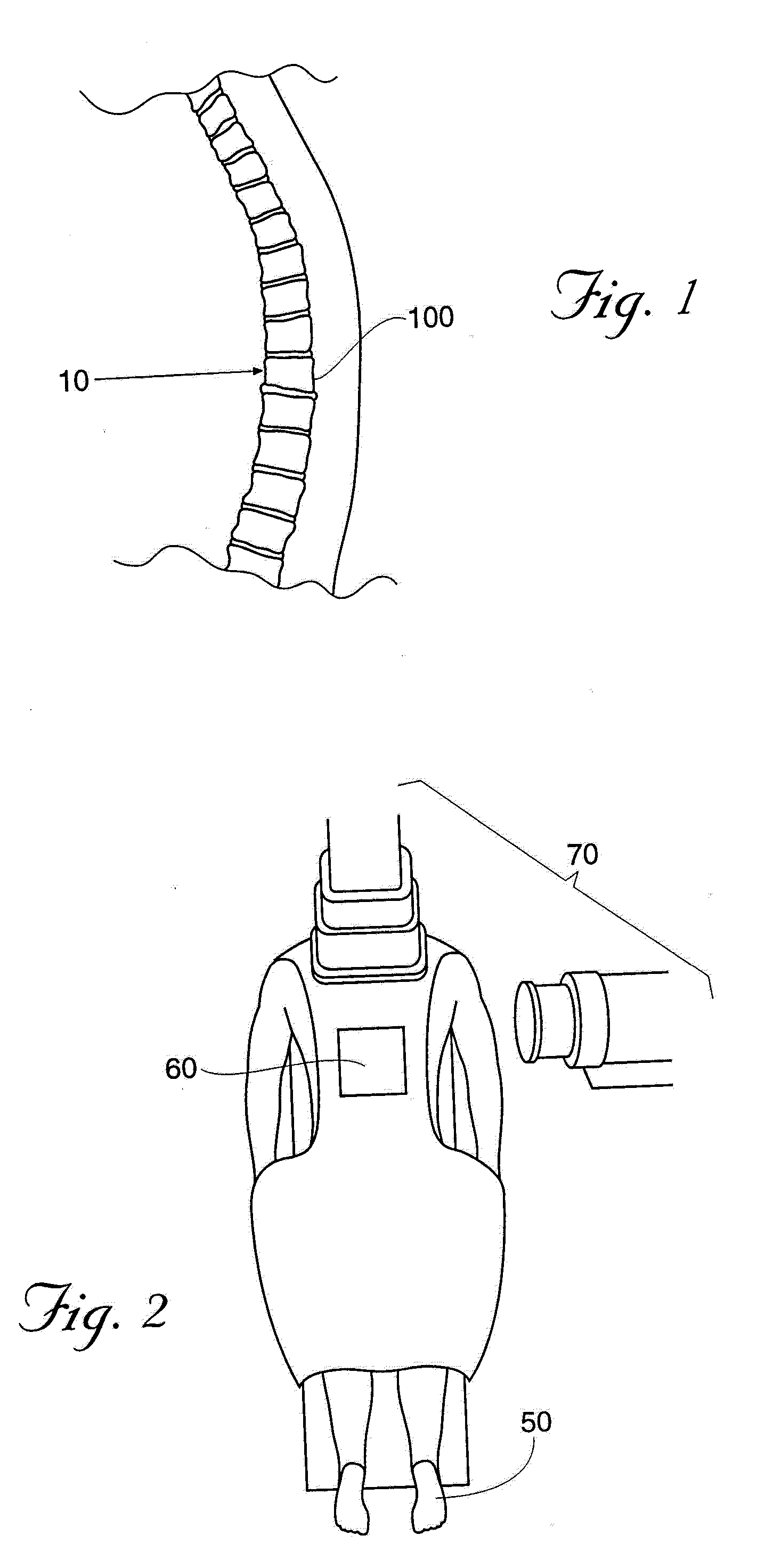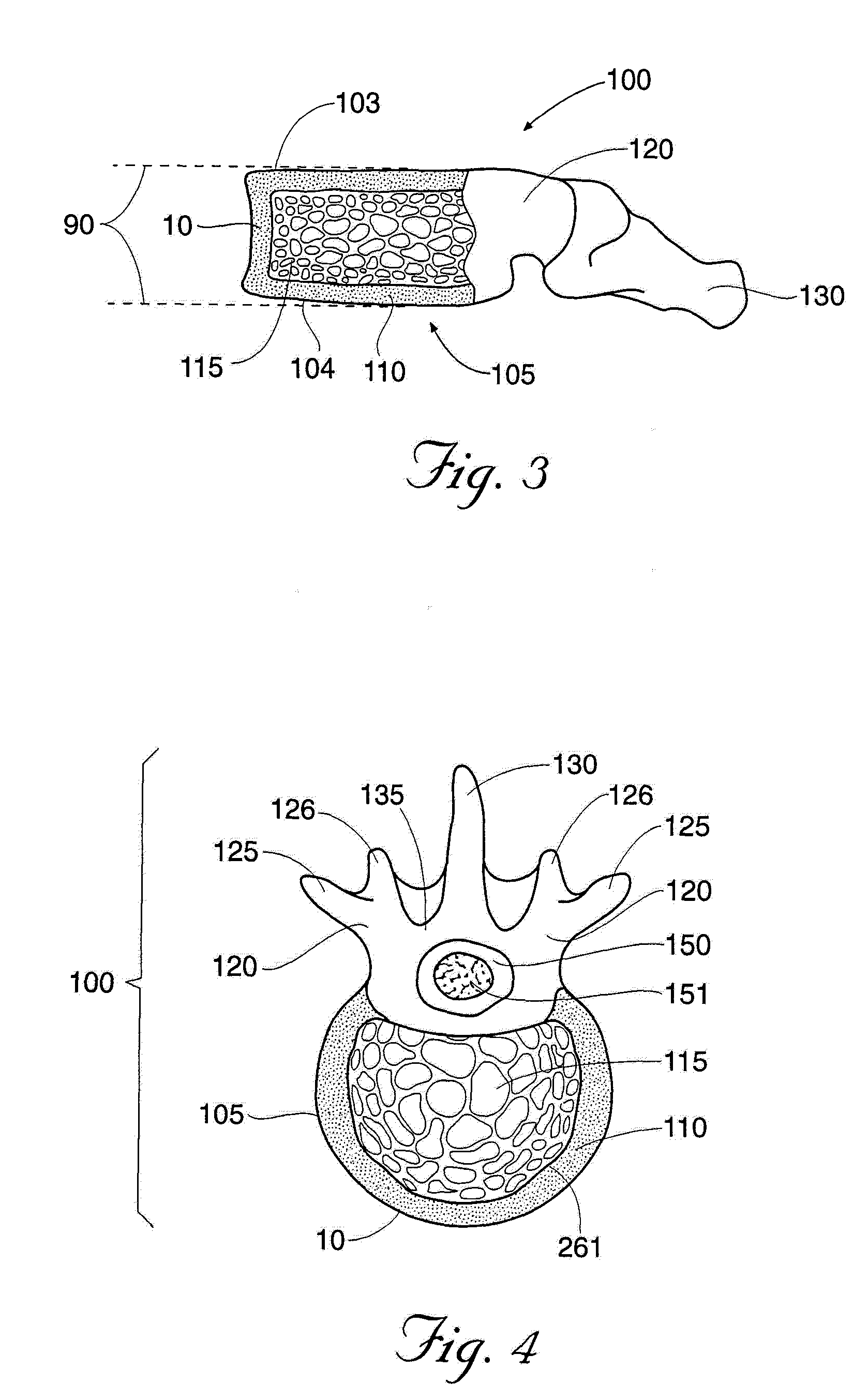However,
osteoporosis or a host of other diseases, including such diseases as
breast cancer, hemangiomas, osteolytic metastases or spinal myeloma lesions, as well as the long term excessive use of
alcohol, tobacco and / or various drugs, can affect and significantly weaken healthy bone over time.
If unchecked, such factors can degrade
bone strength to a point where the bone is especially prone to fracture, collapse and / or is unable to withstand even normal daily stresses.
Unfortunately, losses in
bone strength are often difficult to discover until bone integrity has already been seriously compromised.
For instance, the effects of
osteoporosis are often not discovered until after a
bone fracture has already occurred, at which time much of the patient's overall
bone strength has typically weakened to dangerous levels.
Moreover, as most
bone development occurs primarily during childhood and early adulthood, long-term losses in bone strength are typically irreversible.
In addition, many bone diseases, including osteoporosis,
cancer, and other bone-related disorders, are not routinely curable at our current stage of medical development.
For many individuals in our aging world
population, undiagnosed and / or untreatable bone strength losses have already weakened these individuals" bones to a point that even normal daily activities
pose a significant
threat of fracture.
For example, when the bones of the spine are sufficiently weakened, the compressive forces in the spine can often cause fracture and / or deformation of the vertebral bodies.
For sufficiently weakened bone, even normal daily activities like walking down steps or carrying groceries can cause a collapse of one or more spinal bones, much like a piece of chalk collapses under the compressive weight of a human foot.
Fractures such as vertebral compression fractures often result in episodes of pain that are chronic and intense.
Aside from the pain caused by the fracture itself, the involvement of the
spinal column can result in pinched and / or damaged nerves, causing
paralysis, loss of function, and intense pain which radiates throughout the patient's body.
Even where nerves are not affected, however, the intense pain associated with all types of fractures is debilitating, resulting in a great deal of stress,
impaired mobility and other long-term consequences.
For example, progressive spinal fractures can, over time, cause serious deformation of the spine ("
kyphosis"), giving an individual a hunched-back appearance, and can also result in significantly reduced
lung capacity and increased mortality.
Until recently,
treatment options for vertebral compression fractures, as well as other serious fractures and / or losses in bone strength, were extremely limited mainly
pain management with strong oral or intravenous medications, reduced activity, bracing and / or
radiation therapy, all with mediocre results.
Because patients with these problems are typically older, and often suffer from various other significant health complications, many of these individuals are unable to tolerate
invasive surgery.
In addition, to curb further loss of bone strength, many patients are given hormones and / or
vitamin / mineral supplements again with mediocre results and often with significant side effects.
The most significant danger associated with vertebroplasty is the inability of the practitioner to control the flow of liquid
bone cement during injection into a
vertebral body.
Bone cement, which is viscous, is difficult to inject through small
diameter needles, and thus many practitioners choose to "thin out" the
cement mixture to improve
cement injection, which ultimately exacerbates the leakage problems.
In a recent study where 37 patients with bone metastases or
multiple myeloma were treated with vertebroplasty, 72.5% of the procedures resulted in leakage of the
cement outside the
vertebral body.
Moreover, where the practitioner attempts to "thin out" the cement by adding additional liquid
monomer to the cement mix, the amount of unpolymerized or "free"
monomer increases, which can ultimately be toxic to the patient.
Another drawback of vertebroplasty is due to the inability to visualize (using CT scanning or x-
ray fluoroscopy) the various venous and other
soft tissue structures existent within the
vertebra.
Another significant drawback inherent in vertebroplasty is the inability of this procedure to restore the vertebral body to a pre-fractured condition prior to the injection of the reinforcing material.
Moreover, it is highly unlikely that a traditional
vertebroplasty procedure could be capable of restoring significant pre-fracture
anatomy because bone cement flows towards the path of least resistance, any en-masse movement of the
cortical bone would likely create gaps in the interior and / or walls of the vertebral body through which the bone cement would then immediately flow.
While Kyphoplasty can restore bones to a pre-fractured condition, and injected bone filler is less likely to leak out of the vertebral body during a Kyphoplasty procedure, Kyphoplasty requires a greater number of surgical tools than a
vertebroplasty procedure, at an increased cost.
Moreover, Kyphoplasty tools are typically larger in
diameter than vertebroplasty tools, and thus require larger incisions and are generally more invasive.
 Login to View More
Login to View More  Login to View More
Login to View More 


